10 numbers for putting green maintenance
I spoke at an event in Korea organized by Golf Seminar magazine for golf course superintendents, CEOs, and general managers. I spoke about 10 numbers for putting green maintenance.1
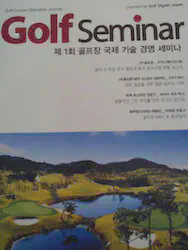
At almost every golf course, the mowing height is known. Surprisingly, some of these other important numbers are not.
Although one doesn’t need to know all these numbers, I suggested that adding more of these numbers to one’s vocabulary will lead to improved putting green performance. This is a summary of the 10 numbers I talked about in this presentation.2
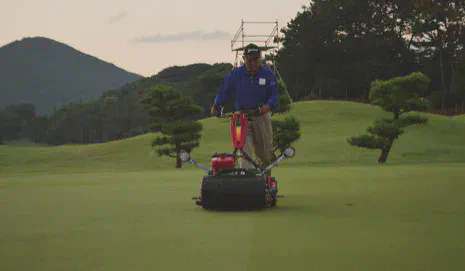
The mowing height of putting greens is almost always known on a daily basis. Depending on the grass type, time of year, and type of putting surface, the mowing height will usually be in the range of 2.5 to 5.0 mm.
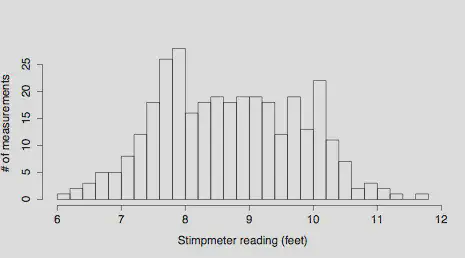
It is important to know the green speed, which is measured as the stimpmeter reading. I shared data from the hundreds of measurements I’ve made of green speed in Asia. For 328 measurements on creeping bentgrass greens, most have a stimpmeter reading between 7.5 and 10.5 feet.
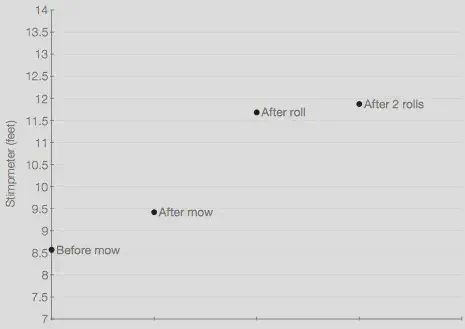
The easiest way to improve ball roll, by increasing the green speed and improving the smoothness of the green, is by rolling. I shared data shown above showing the increase of 2 feet in green speed on a course in Japan when the green was rolled.
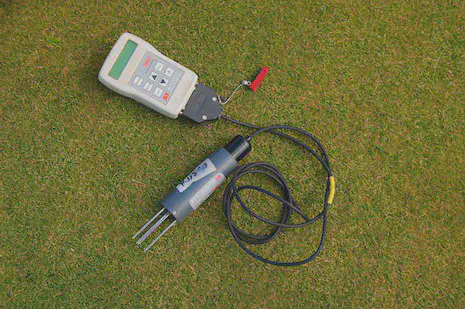
One should know the soil moisture content. This allows one to keep the soil air as high as possible and to minimize the amount of water used while avoiding drought stress.
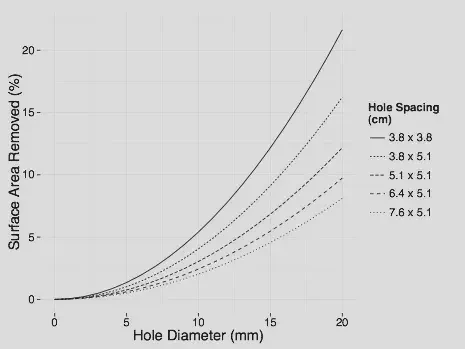
One should also know the soil air content. We can consider the soil’s solid matter to be a fixed amount, and the pore space to be a fixed amount. Once we know the total pore space (measure at a lab, or just estimate it at 50%), and when we know the soil water content, we will know how much air is in the soil. I showed the chart of tine spacing and tine diameter as a way to estimate how much of the putting green surface area will be removed by coring. If one is removing cores and filling the holes with sand, this can be a good technique in the management of soil air.
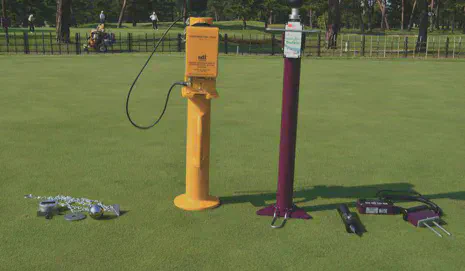
I also talked about surface hardness. The way the ball bounces on a green is important too. There are various meters available for measuring surface hardness, and I showed 4 of them here: the Precision USA firmness meter, the Clegg impact soil tester, the Tru-Firm, and the Yamanaka tester. Although there can be a lot of variability between soil moisture and surface hardness, sometimes – especially when the grass type and soil type are the same – there can be a strong relationship between the two measurements.
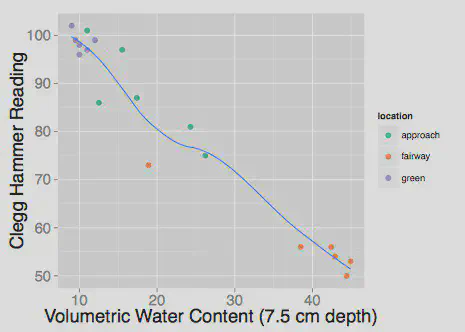
The data above are from a course with seashore paspalum on fairways, approaches, and greens, and with a sandcapped surface on all those areas. A Clegg reading of more than 87 is indicative of a relatively firm surface, and a reading of less than 87 is indicative of a relatively soft surface. In most cases, the surface hardness decreases (becomes softer) when the soil water content increases.
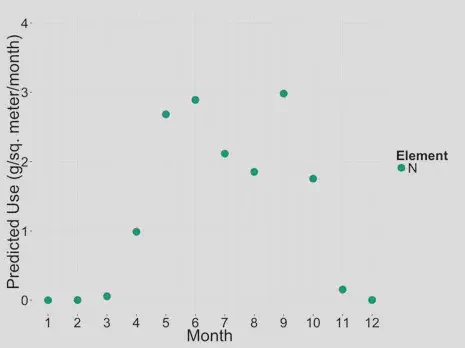
Nitrogen (N) controls the growth rate. It is important to match the N supply to the desired growth rate of the grass. Too little N and too much N can both cause problems. For creeping bentgrass at Seoul, the annual N rate is expected to be from 15 to 40 g N m-2, depending on the desired conditions (and especially on how busy the course is). Some courses do well over 100,000 rounds of golf per year, so a relatively high growth rate is required to recover from traffic damage.
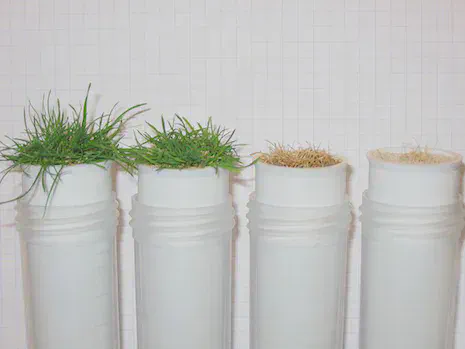
Potassium (K) is the second most abundant mineral element in creeping bentgrass leaves, after nitrogen. Healthy bentgrass will use about twice as much nitrogen as K. Above we can see grass that is sufficient (far left) in K and then gradually moves through to severe deficiency at right, when no K is supplied. The best way to identify the K requirement involves soil testing; one can also estimate K requirement as simply being 50% of the N requirement. That is, if one applies 20 grams of N, the grass will be expected to use 10 grams of K.
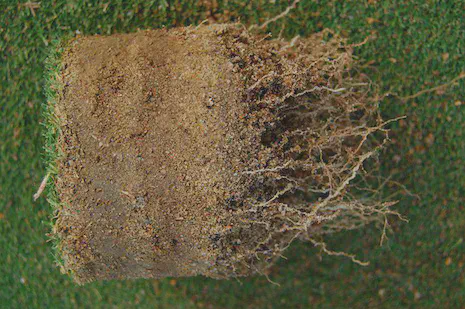
After N and K, the next mineral element in abundance is phosphorus (P). Adequate supply of P is important for many things, and this element is especially well known for its importance in the development of a healthy root system. Bentgrass leaves have about 8 times as much N as they do P; soil testing to determine P requirement is best, but a quick estimate of P requirements involves taking 12.5% of the N rate. That is, if the grass is supplied with 20 grams of N, it will be using about 2.5 grams of P.
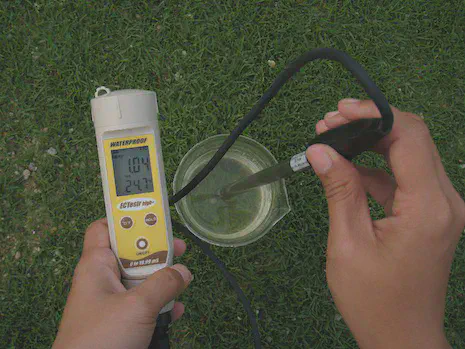
Almost every golf course putting green is supplied with supplemental irrigation water during times when drought stress must be prevented. But the salt content of the irrigation water is not always known. The water above looks clean, but in the water is dissolved more than 640 ppm salt. For creeping bentgrass, that concentration of salt, applied to the grass, and allowed to accumulate in the soil, could cause problems. Salt can be managed by leaching, but first one needs to know how much salt is in the water.
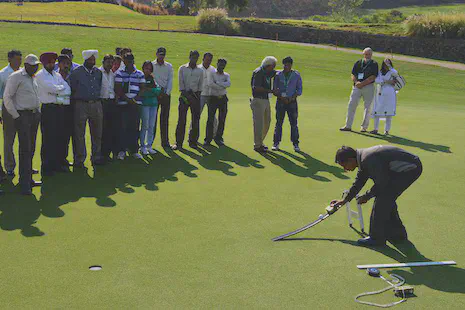
What we really want to do is have a reliable green surface, one on which a ball hit at the right pace and on the right line will have a high probability of going in the hole. This can be measured with the R&A Holing Out Test.
This seminar was held in April 2014. ↩︎
A quick review of this list in 2023 has me adjusting a few things. I’d use the Bobble Test to assess reliability of a putting surface, rather than the Holing Out Test. I would also like to know clipping volume. And total organic material. ↩︎